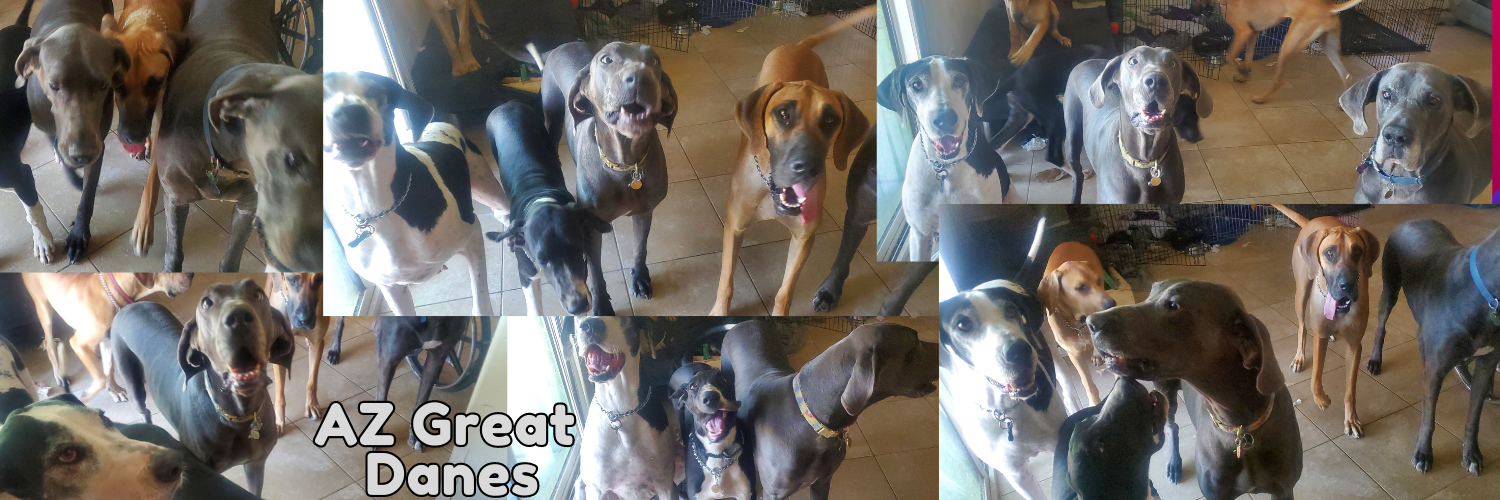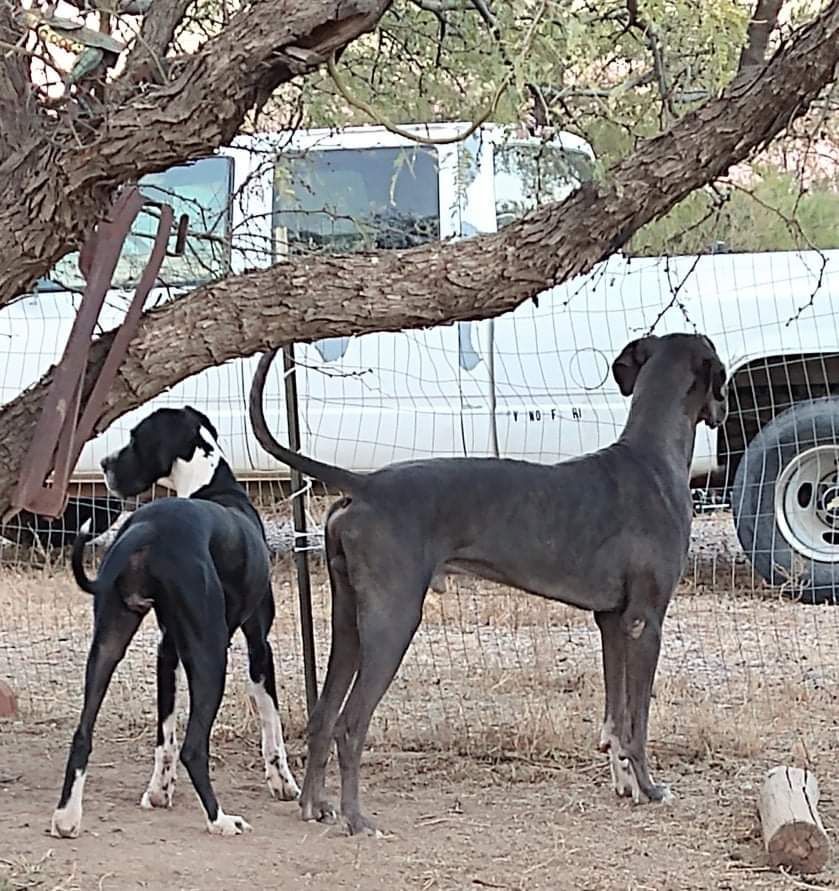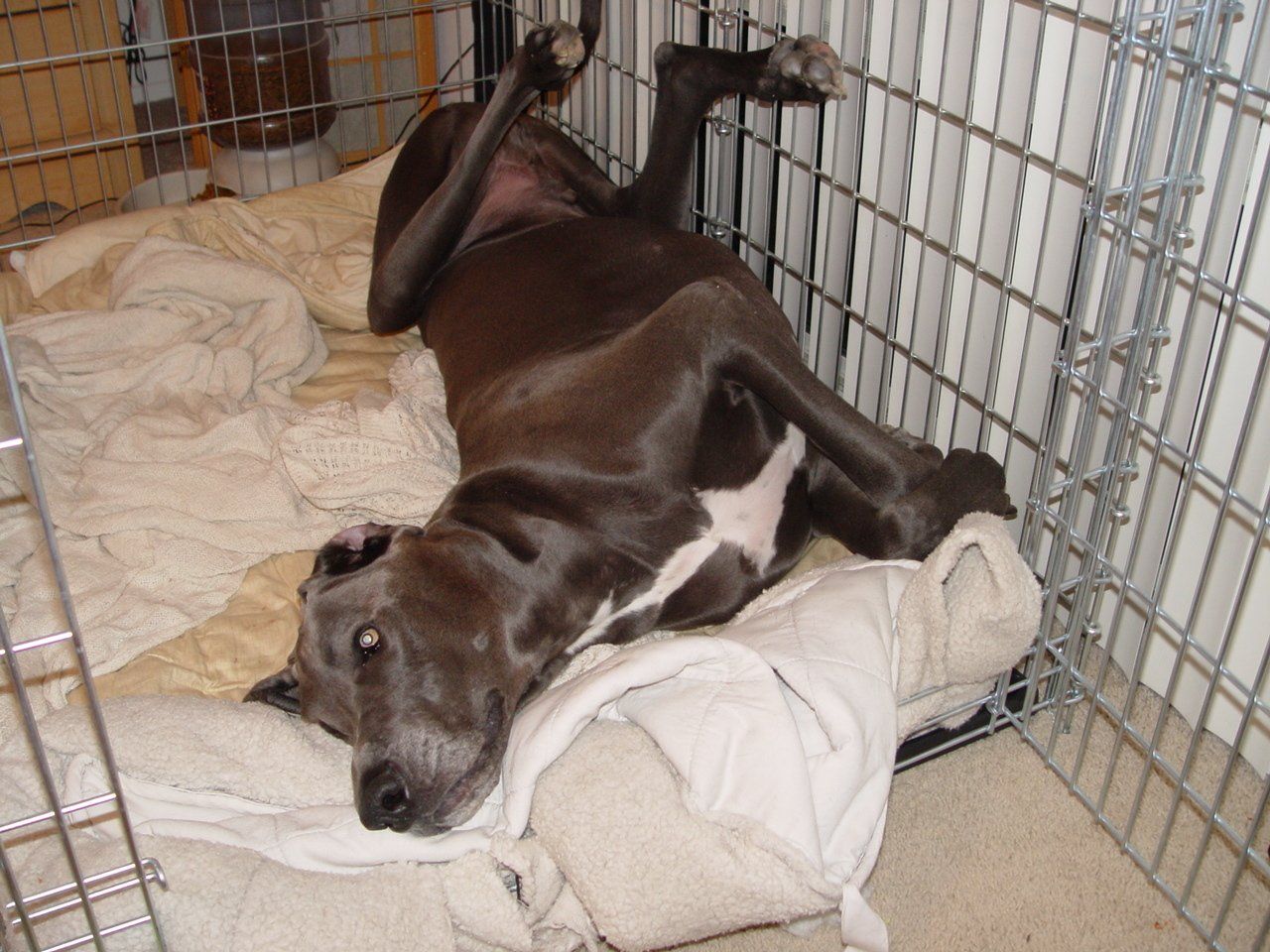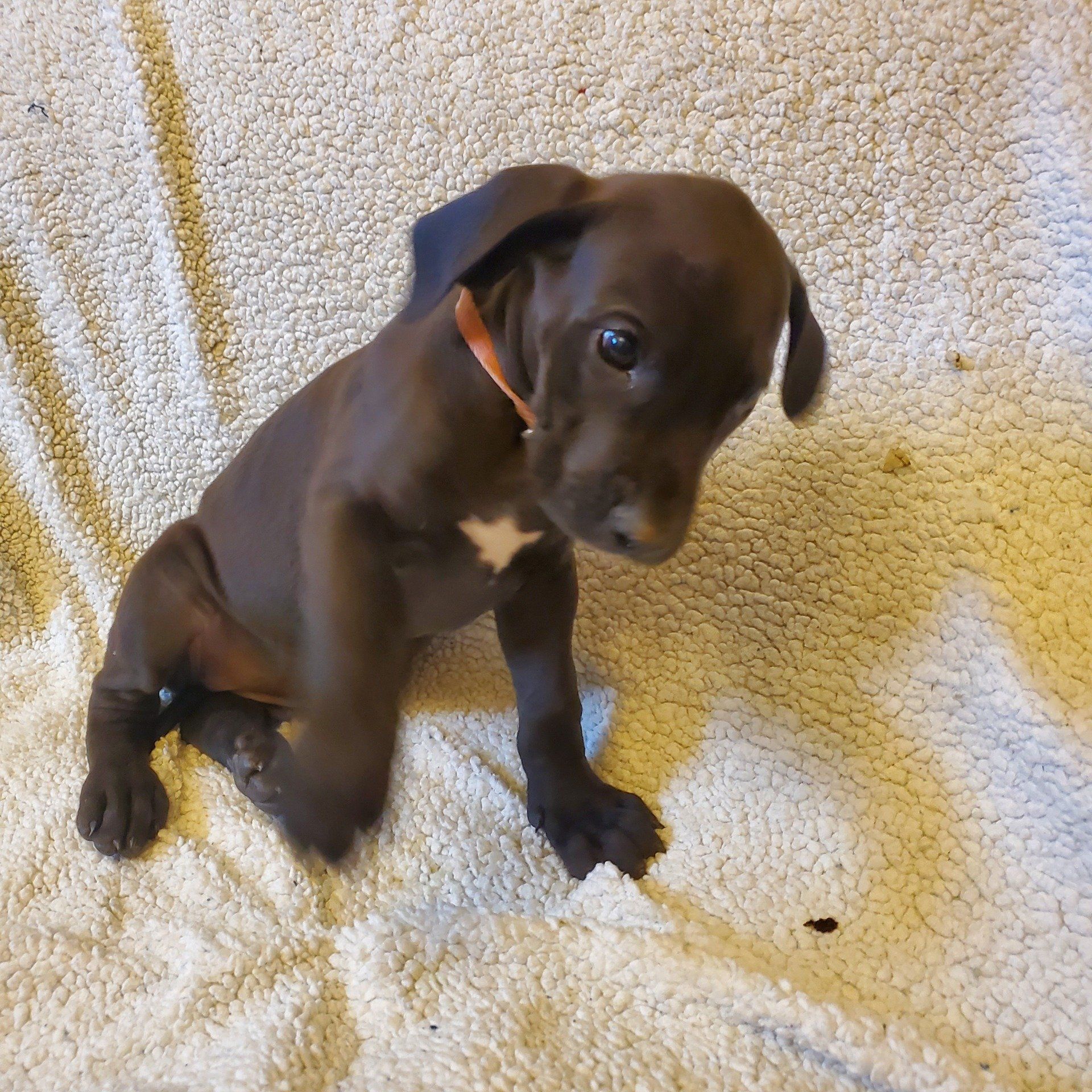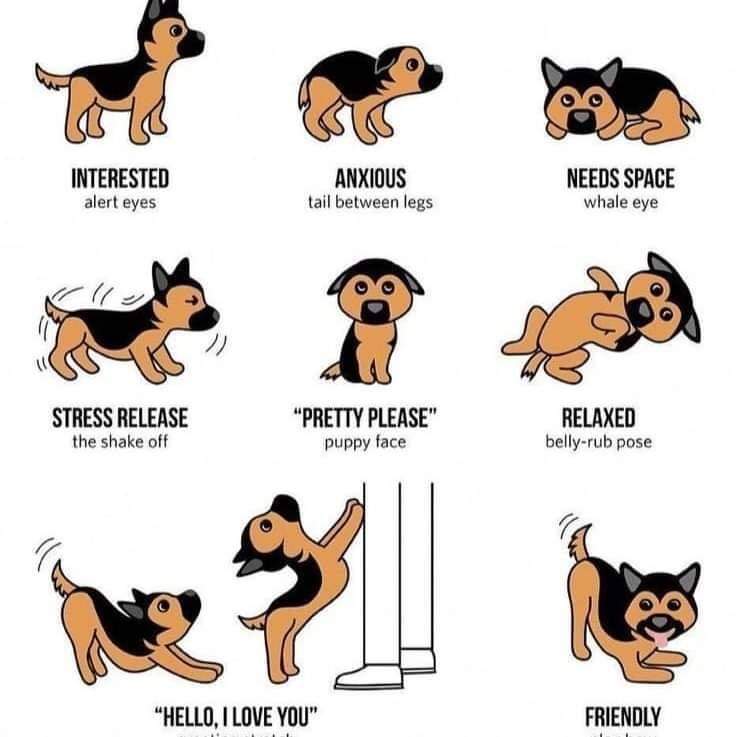The Misty Method of Litterbox Training Your Great Dane Puppy
Items you'll need.
Purchase List of items to buy:
- A plastic washer pan https://amzn.to/44YWaMq
- Puppy pads - these are the biggest, most absorbant and cheapest I have found. https://amzn.to/2UO7TeH
- Fluff for more soaking power (optional) https://amzn.to/3QgohTp
- Litter. Do not use anything but this litter. The wood chips get caught in everything, regular litter track all over and they dig in it, the fluff above, they will eat causing possible fatal intestinal issues. https://amzn.to/3DvAnQQ
So I put down about 4-6 puppy pads.
I place to fluff on top.
Then a healthy layer of the litter on top of the fluff.
When it is time to clean the litterbox, simply fold or roll the puppy pads and place in a trash bag.
When you are first starting out, you want it scented. So pick up some poop and put it in there. Then place some litter on top of the poop so they don't step in it. You will want to keep the poop in there for awhile until they understand the potty area.
Once you are done feeding them their goat's milk mixture, place them in there. They will not go in the beginning. That's ok. Just keep doing it every time they eat. If you have slow eaters, don't worry about them, just get the first few fast eaters and once they are done, place them in the area. The rest will follow in time. Some will be quicker to catch on than others. Sometimes the whole litter can be a little slow to get it but they always understand eventually.
Remember, they will not be 100% spot on every time. Sometimes they will get near it and go. Sometimes they just can't quite make it or if there are a lot of puppies in the potty area, well, they can't wait.
I use the Misty Method of Litterbox training my #greatdanepuppies Since this video and a lot of trial and error, I now use puppy pads and yesterday's News pellets and it is a wonderful system. The pups do not eat the pellets and they are heavy enough to hold down the puppy pads.
So I start the training at 3 weeks. I start with their warm goats milk food and after they are done eating, I put them in the potty area. I still allow it to be scented so they understand there are two areas, one for eating, sleeping and playing and the other is potty.
In the wild, dogs do not use the potty in their dens. So that concept carries over to domesticated dogs as well. Mom will clean them so that predators don't smell the babies and then the babies will start to understand that they potty away from where they sleep. It is a survival instinct.
The best part about it is that my puppies transition to outside pottying very well once they go home.
The Misty Method is a specialized approach to housebreaking puppies, particularly useful for individuals who live in apartments or areas where outdoor potty training might be challenging. Developed by dog trainer Ian Dunbar, this method involves teaching the puppy to use a designated indoor potty area, such as a litterbox or pee pads.
Here are the key steps of the Misty Method:
- Select the Appropriate Area: Choose a specific area in your home where you want your puppy to do their business. This should be a low-traffic area with easy access for your puppy.
- Acclimate the Puppy: During the initial stages, keep your puppy confined to a small, puppy-proofed space that includes the designated potty area. Use baby gates or playpens to create this controlled environment.
- Use Attractive Substrate: Place the litterbox or pee pads in the designated area. Make sure to use an appropriate substrate that attracts the puppy, such as dog-specific litter or attractant-infused pee pads.
- Manage Supervision: Keep a close eye on your puppy, especially after meals, playtime, or naps. Puppies typically need to relieve themselves after these activities.
- Cueing and Reinforcement: When you notice your puppy showing signs of needing to go potty, like sniffing or circling, gently pick them up and place them in the designated area. You can also use a verbal cue, like "Go potty" or "Be quick," to associate the action with the command. Be patient and wait for the puppy to eliminate. When they do so successfully, provide immediate positive reinforcement, such as treats and praise.
- Consistent Schedule: Establish a consistent feeding schedule for your puppy, which will also regulate their potty times. Puppies typically need to relieve themselves shortly after eating. By following a routine, you'll make it easier for your puppy to understand when it's time to go.
- Accidents Happen: Understand that accidents will occur, especially during the early stages of training. When they happen, don't scold or punish your puppy. Instead, clean up the mess calmly and thoroughly to remove any lingering scent that might encourage repeat accidents.
- Gradual Expansion: As your puppy becomes more reliable in using the designated potty area, gradually expand their access to other parts of the home. However, do this slowly and under supervision, as you don't want to overwhelm the puppy.
Remember, consistency and patience are the keys to successful litterbox training using the Misty Method. It's essential to reinforce positive behavior and avoid any negative reactions, ensuring a positive and stress-free learning experience for your puppy.
